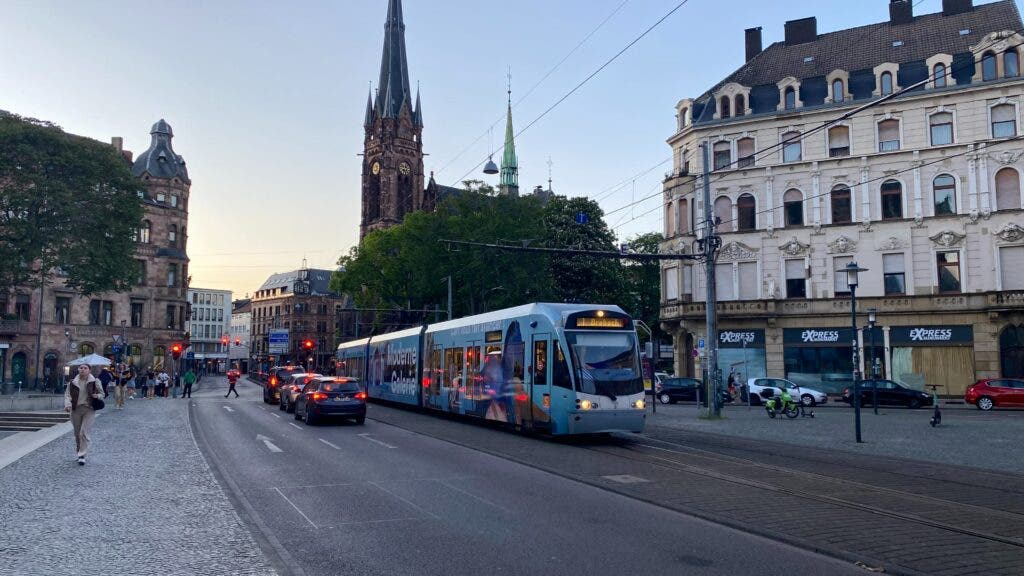The first figures from Germany show that low public transit fares were indeed efficient at slashing road traffic. But is it really worth it?

When Germany announced a plant to temporarily slash public transit fares, reactions were mixed. It was a bold plan: for just €9 (€1 is about equal to $1), Germans would be able to travel aboard regional rails, buses, and subways for a whole month. Basically, you get a month’s worth of travel for less than ten bucks. The motivation was twofold — on one hand, the German government framed it as a way to slash emissions, pollution, and congestion; on the other hand, Germany is hard-pressed to reduce its imports of Russian oil and gas, and getting people to be more efficient and use public transit instead of their own cars is a way to save on fuel.
But it came with a big price tag: the German government will have to shore up 2.5 billion euros for the plan to reimburse transit companies for lost revenue. Some critics have said it’s too expensive, while others have said it will put too much pressure on existing infrastructure.
Now, an analysis by the traffic data specialist TomTom for the German Press Agency found a decrease in congestion in 23 of the 26 examined cities.
At first, there was no detectable change in congestion data — presumably, as the population got acclimated to the idea. But as a few weeks passed, the change was clear. The data “suggests that this decline is related to the introduction of the nine-euro ticket,” said TomTom traffic expert Ralf-Peter Schäfer.
“In the first few days after the introduction of the nine-euro ticket, the data from TomTom showed hardly any effects of the measure on car traffic. In the meantime, however, a positive effect on traffic flow can be seen in almost all cities in Germany find out,” said Schäfer. “The decrease in the loss of time varies from city to city,” the expert added. The analysis was carried out for the week of June 20.

In some cities like Hamburg or Wiesbaden, the average congestion dropped by around 14% — meaning that for every 30 hour drive, drivers saved over 4 minutes. During rush hour, the difference would often be even more significant.
Other factors could play a role in the congestion reduction (such as higher fuel prices), but the data suggests that the congestion is also lower compared to the same week in June 2019. Train usage is also up by 40%.
“If I were the government, I would really think hard now,” Schaefer also said .
The government seems to indeed be thinking about this. When he took office in late 2021, transport minister Volker Wissing clearly positioned himself as an advocate for drivers. Now, he declared the introduction of the $9 ticket “colossal success” and is reportedly thinking about a potential successor to the ticket. “We have significantly less traffic on the streets, significantly fewer traffic jams.”
But Germany’s finance minister says that although most people support the idea of cheaper train fares subsidized by the government, there will no extension to the $9 ticket. Meanwhile, Wissing says he is waiting for a full analysis on the effects and not just preliminary results.
Already, though, the preliminary results are intriguing. The price discount was huge in some cities — in Berlin or Munich, for instance, the discount was over 90%. In Berlin, fare evasion went down 90% when the $9 ticket was introduced, suggesting that fare evasion is caused by high fares. Also, it’s not just that some people are using public transit to get to and from work. In many German cities, many additional trips were taken on the weekends, hinting that people took the train or the bus to hike in the mountains and forests, or just to go someplace nice away from the city. In other words, cheaper public transit is helping some people improve their quality of life, something they would not otherwise be able to afford.
Perhaps this is the cherry on top of the cheap public transit cake. Sure, it comes at a cost — it’s a big subsidy — but it’s making cities more affordable and manageable, especially for people who need it most. For that alone, it’s probably worth it.


